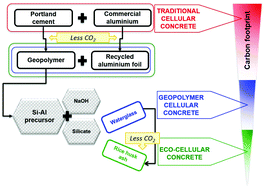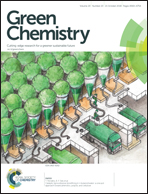New eco-cellular concretes: sustainable and energy-efficient materials
Abstract
Chemistry is an essential science for understanding and developing construction materials. Specifically, the application of the green chemistry concept to the cement sector may allow the fabrication of new environmentally friendly materials with good sustainability and energy efficiency. Cellular concretes are an excellent alternative to conventional concrete in terms of thermal insulation and material economy. In this paper, the development of waste-based cellular concrete is presented; due to its good performance and low environmental impact, this focus is warranted. Three different cellular concrete systems were investigated: (i) traditional cellular concrete based on ordinary Portland cement and commercial aluminium powder; (ii) geopolymer cellular concrete applying alkali-activated chemical technology with a comparison of the use of two precursors, fluid catalytic cracking catalyst residue (FCC) and blast furnace slag (BFS), and recycled aluminium foil as an aerating agent; (iii) eco-cellular concrete, where commercial waterglass was replaced by an agro-industrial by-product, rice husk ash (RHA), in the activating solution. The development of geopolymer cellular concretes with different precursors and activating solutions has proven that the production of this type of concrete using different types of precursors is possible, depending on the availability of by-products and wastes. The densities, compressive strengths, and thermal properties of the three cellular concrete systems are assessed and a complete study on the carbon footprints of the developed concretes is presented. The results show that the alternative concretes have densities from 474 to 813 kg m−3, with compressive strengths from 2.6 to 4.6 MPa and thermal conductivities from 0.083 to 0.281 W m−1 K−1. In the case of the cellular concrete prepared using RHA in the activating reagent, the heat released from the dissolution of NaOH pellets in water dissolved the soluble silica present in the ash. This production method resulted in a reduction of its carbon footprint by 78%.



 Please wait while we load your content...
Please wait while we load your content...